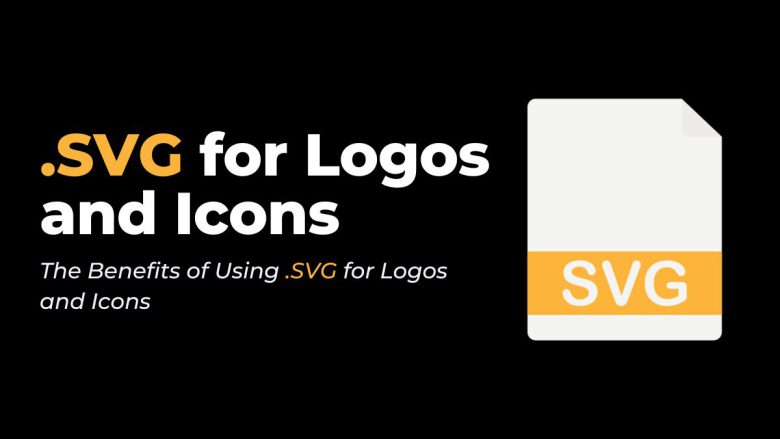
In web design and digital graphics, picking the right file format for logos and icons is critical. The Scalable Vector Graphics (.SVG) format has become popular among designers and developers. It has many advantages over traditional raster formats like JPEG and PNG. This blog post will look at using .SVG for logos and icons. It will cover why it is the best option for modern web design.
Understanding .SVG
SVG is an XML-based vector image format for 2D graphics. It allows for interactivity and animation. Vector images, as opposed to raster images, consist of mathematically defined paths. This fundamental difference gives .SVG several distinct advantages.
Benefits of Using .SVG for Logos and Icons
1. Scalability Without Loss of Quality
One of the most significant benefits of.SVG files is their scalability. SVGs are vector-based. They can be scaled to any size while maintaining quality. This is key for logos and icons. They must be shown at many sizes on different devices and resolutions.
For example, a company logo saved as an.SVG file can be used on a small mobile app icon or a large billboard. It won’t lose clarity or detail.
2. Small File Sizes
SVG files are typically smaller in size compared to raster images. This is because they store information as geometric shapes rather than pixel data. Smaller files load faster. This is crucial for web speed and user experience.
Example: An SVG icon might only be a few kilobytes in size, while a similar PNG icon could be several times larger. This difference can greatly slow down page load times. This is especially true for websites with many icons.
3. High Resolution and Responsiveness
SVGs have no fixed resolution. They appear clear on any display, including high-resolution ones like Retina displays. This ensures that your logos and icons always look sharp and pro. It works no matter what device is used to view them.
For example, an SVG logo will appear just as sharp on a 4K monitor as on an HD screen. This ensures it looks the same on all devices.
Read How to Convert a JPG to SVG.
4. Editability and Flexibility
SVG files are text-based and written in XML. So, you can easily edit them with a text editor or vector graphic software. For example, Adobe Illustrator or Inkscape. This lets you easily customize logos and icons. You don’t have to start from scratch.
For example, if a company rebrands, it needs to change its logo’s colors. An SVG file can be easily edited to show the new colors. This saves time and effort.
5. Interactive and Animated Graphics
SVG supports interactivity and animation, enabling designers to create dynamic and engaging graphics. This feature is useful for web apps and interfaces. They need interactive icons and animated logos.
For example, an SVG icon on a website can change color or size when hovered over or clicked. This makes the user experience more interactive and engaging.
6. SEO-Friendly
SVG files can improve your website’s SEO. Because SVGs are text-based, search engines can index their content. This means that keywords, descriptions, or metadata in the SVG file can help your site rank. They can help it rank in searches.
Example: Adding relevant keywords to an SVG logo’s metadata can help search engines. They will understand the content and context of your site. This may improve its visibility in search results.
7. Cross-Browser Compatibility
Modern web browsers support SVG files. So, your logos and icons will appear correctly for most users. This broad compatibility eliminates the need for fallback solutions, simplifying the design process.
For example, an SVG logo will render correctly in all major browsers. These include Chrome, Firefox, Safari, Edge, and mobile browsers. This ensures a consistent user experience across platforms.
8. Accessibility
SVGs can be made accessible to people with disabilities. Screen readers and other tools can interpret SVG graphics. But, only if you add the right attributes and metadata. This improves your website’s accessibility.
For example, adding titles and text to an SVG logo helps visually impaired users. They can understand the logo’s content using screen readers. This increases inclusivity.
How to Implement SVG Logos and Icons
1. Creating SVG Graphics
You can make SVG logos and icons using vector graphic design software. For example, you can use Adobe Illustrator, Inkscape, or Sketch. These tools help you create complex vector graphics and export them as SVG files.
Example: Use Adobe Illustrator to make a company logo. Then, export the design as an SVG file. You will use it on your website and in marketing materials.
2. Optimizing SVG Files
Before using SVG files on your website, you must optimize them. This reduces file size and boosts performance. Tools like SVGO can clean up SVG files. They can compress them without reducing quality.
Use SVGO to optimize an SVG icon. This reduces its file size from 10 KB to 5 KB. It makes the icon load faster and perform better.
3. Embedding SVG in HTML
There are several ways to include SVG graphics in your HTML documents:
- Inline SVG: Embedding the SVG code directly in your HTML file.
- Image Tag: Using the <img> tag to link to an external SVG file.
- Background Image: Using CSS to set an SVG as a background image.
Example: Embed an SVG logo inline in your HTML:
<svg xmlns="http://www.w3.org/2000/svg" viewBox="0 0 100 100"> <!-- SVG content here --> </svg>4. Styling SVGs with CSS
You can style SVG elements with CSS. This lets you change their look based on user actions or other factors. This flexibility makes it easy to create responsive and interactive graphics.
Example: Change the color of an SVG icon on hover using CSS:
svg:hover { fill: #ff0000; /* Change color to red on hover */ }Conclusion
The Scalable Vector Graphics (.SVG) format offers many benefits for logos and icons. It is an ideal choice for modern web design. SVG is scalable. It has small file sizes and high resolution. It is editable and supports interactivity. SVG is a versatile and powerful solution for making and showing digital graphics. Use SVG for your logos and icons. It will improve your website’s performance, user experience, and visual appeal. This will help your brand stand out in the digital landscape.


